< blog | Finding the Lost Chord
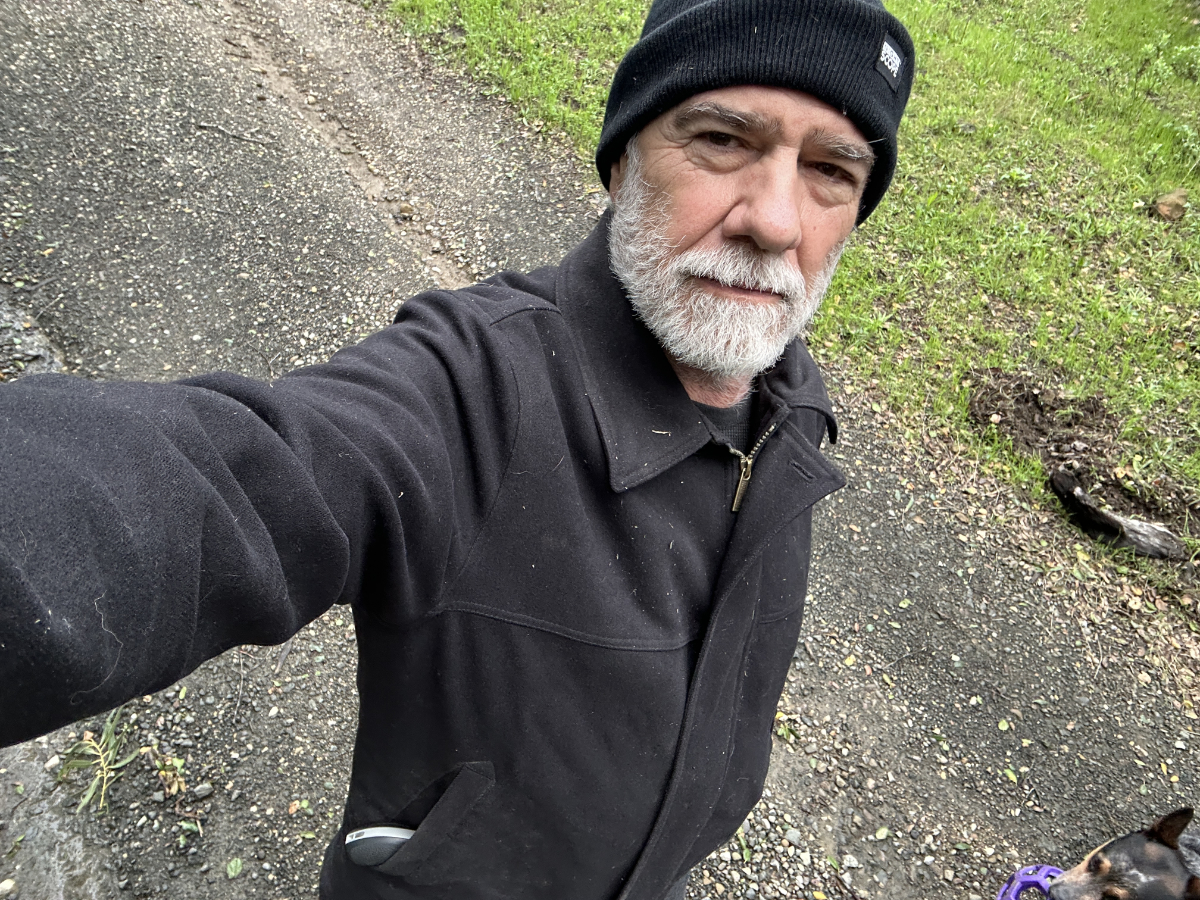
Finding the Lost Chord
Chris Pelonis on Music, Guitars, and Community
There’s a certain alchemy that happens when an artist steps into the producer’s chair—seeing the song from both inside and outside, chasing the moment it clicks into something real. For Chris Pelonis, the dance between musician and producer isn’t a split identity; it’s the essence of his creative life. From the warm hush of a guitar that feels like it’s playing itself to the squeak of an office chair turned percussion track, Chris brings curiosity, humility, and a craftsman’s ear to every note. We caught up with him ahead of his show at Lost Chord Guitars to talk about what it means to capture and captivate, why he’s banned tambourines, and the guitar that got away.Roots & Rhythm
SYV Buzz: You’ve worked on both sides of the glass—as a musician and as a producer. Which hat feels more like home, and how do they feed each other creatively?Chris Pelonis: Great question. I think I’m an artist (musician, singer songwriter) first but have a strong passion for producing as well. There are many descriptions of a “producer.“ For me it includes engineering, mixing, and mastering. Approaching everything musically as well as technically. Often when I’m producing I’m also playing and sometimes singing if it works for the artist. Ultimately all of the above combined is what makes a complete artist as it applies to me personally. There is a vague separation. All of these disciplines inform each other artistically. I’m not saying artists need to be engineers or vice versa, but for me, it blurs together.
I do have a passion for helping artists capture their true essence or a version of themselves that’s undiscovered. So it’s a close second as far as where I’m most at home.
SYV Buzz: What’s the strangest or most unexpected sound you’ve ever turned into music? (And did anyone notice?)
CP: We sampled the squeaky sounds of a reclining office chair and placed it as a percussion instrument on a track from my Chris Andrew “Hit And Run” album. 1986. “Back Seat Lover”. Don’t think anyone noticed.
SYV Buzz: If your life had a backing band, who would be in it—and what instrument would you refuse to let them bring?
CP: Oh man! You’re really setting me up! Too many to mention but I’ll give the short list: Christian Pelonis, Mai Leisz, Greg Leisz, Michael McDonald, and Austin Beede. No tambourines!
SYV Buzz: You have an entire room of guitars. Do you have one that feels like an extension of you—your go-to when writing or performing? And is there a dream guitar still on your wishlist?
CP: This is complicated. Reminds me of a story Jackson Browne told. He was picking up one of his many guitars from being repaired. There was a guy there doing the same. He asked Jackson how many guitars he had to which Jackson replied that he didn’t really know. The guy said that a guitar is like a woman and there should only be one. The guy then received his repaired guitar that had three necks!
I have quite a few guitars and they all inspire something unique. There is one that has something beyond magical. Sometimes I’m certain it’s playing itself. It really feels like an extension of me or even more so a part of me. It’s what I’m playing on my first single coming soon, “Beautiful Life.” It was made by one of the great builders, Del Langejans. It’s Michigan Walnut back and sides and Douglas fir on top. I’m drawn to non-traditional tone woods. Although that guitar is the one that answers your question, my favorite top wood is redwood. There are four guitars I'm playing a lot on the record. Two James Goodall Guitars and two Bedell Guitars. All are Redwood tops. The Goodalls back and sides woods, one is Cherry Wood and the other is Myrtle Wood. The Bedells are both Brazilian Rosewood on the back and sides. My go to electrics are a '57 Strat, a customized Thinline Tele, the TV Jones I play with The Abiders, a couple of Gretch Guitars, and a Heritage 335.
The dream guitar is the 68 Gibson 335 I sold in the early '80s to buy a Mesa Boogie Amp. That was the electric version of my Langejans Acoustic.
SYV Buzz: I’ve known a few musicians who name their go-to guitar. Does yours have a name? If so, what’s the origin?
CP: I’m not that guy :-)
The Lost Chord Experience
SYV Buzz: Lost Chord isn’t just a venue—it’s an entire vibe. What inspired its design, and what do you hope people walk away with after a night there?CP: Thank you for saying that! The inspiration was multifaceted.
First, I knew there was a solo acoustic record brewing in me. I felt if I were going to produce what was brewing in me it would require a variety of unique instruments. I decided to create a boutique guitar shop and develop a relationship with some very fine Luthiers and guitar companies. I did just that. I was able to realize my guitar quiver and help others do the same. Also my dear friend and musical partner Jeff Bridges had an idea for a guitar he had been talking to me about for years. We were able to develop his “All In This Together “ guitar with Tom Bedell, the owner of Bedell Guitars and Breedlove Guitars. Ultimately Breedlove is the brand that released the guitar. At the same time I knew performance would be a major part of my vision. As a performing artist, there is always some anxiety around getting the sound that represents you. Most of the time there’s something or many things getting in the way of that. Sometimes the equipment isn’t great or it’s not properly calibrated or maintained. More often than not the acoustics are a problem. A REAL problem. That’s a deep conversation I’ll try to keep brief. From the audience perspective we have all experienced boomy/muddy sound where the music is somewhat indistinguishable. Then there’s the harsh, bright and too loud scenario. Sometimes it’s both. A good system and a good engineer can only take you so far if the room and/or gear isn’t good. Take the same problems to the stage/artist perspective and it’s a bit of a drag, ya know? Can’t hear yourself or you sound bad in the monitors. The stage sounds like a locker room. The audience is loud and the room is echoing all the noise. I could go on with scenarios, but you get the idea.
I wanted to create a space where everyone could connect and share the experience. A space where the artist isn’t fighting these elements and can be more free in their expression. The audience can feel the artist’s intention. I think it’s working because people come in, sit down “quietly,” and really listen. It’s beautiful to see that kind of consideration and connection. It becomes a collaboration between the artist and the audience. It’s more of a listening room/theater.
I wanted to create a live studio. A place where audio and video recordings could capture live performances at a very high level. My tenant had just left and I had just come off designing 45,000 sq ft of studio space for Sony PlayStation, so I was in the zone. I had a great crew I have been working with, and they felt like carrying on. Poof! Lost Chord Guitars!
One little bit of trivia. I was going to call it Lost Coast Guitar because I own Lost Coast Records … but there’s another place with a similar name. Jackson Browne, who was really encouraging me to put this place together, actually came up with the name “Lost Chord Guitars.” A bunch of us were in Montana for Jeff Bridges daughter’s wedding. Jackson asked me how the venue was coming and I told him about the name dilemma. He said “well how about lost chord guitars, you know, keeping with the whole lost thing …. You know … the lost chord.” I said I don’t really know about that. What’s that. He said. "I don’t really know either but you know the moody blues had that song.” Anyway we’re at dinner and he had looked up what “The Lost Chord” was. It’s pretty cool. Y’all can Google it. Anyways I wasn’t so sure about it but it just stuck in my head so that’s what it became.
SYV Buzz: What’s the secret ingredient to creating an intimate, listening-room experience in a time when attention spans are shorter than ever?
CP: It’s all about the sound. The acoustics must be great! Period! Then the equipment must match. You can’t cut corners. The aesthetic is also critical. It has to feel like the kind of place where you wanna sit back and be swept away by the performance. It must also inspire the artist in many ways.
SYV Buzz: Curation clearly matters to you. Are there any guest artists that really stand out over the years—folks who brought something unforgettable to the space?
CP: Too many to name really. The short list … Chris Stills, John Cruz, Willie Watson, Alan Parsons, Kenny Wayne Shepherd, Kenny Loggins, Benji Hughes, Glen Phillips, Laurence Juber. Of course Jeff Bridges, Michael McDonald, and Jackson Browne.
SYV Buzz: Are there any musicians who have become part of the ‘house soul’—artists who show up again and again and feel like part of the family?
CP: Again, that’s a pretty long list, but I think I’d have to say that would be Chris Stills, John Cruz, and Laurence Juber.
Collaborations & Connections
SYV Buzz: You’ve worked closely with Jeff Bridges—who, beyond being a legendary actor, has deep musical roots. What has that creative relationship been like for you? When someone like Jeff takes the stage, how does the energy in the room change? Do those kinds of nights feel different?CP: Jeff and I have a very long history and it’s pretty complicated really. Originally he sought me out to design a recording studio for him in Montecito back around 1995. In our first meeting we went straight to playing guitars and singing. It’s really a long story and probably too long for this article but let’s just say … Finished the Studio, fast-forward. I produced his first album, Michael McDonald ended up helping, Mike, Jeff and I formed a record label and put Mike’s record out along with Jeff’s, we went on tour together, had a blast, Jeff did Crazy Heart, won an Academy award, T-Bone Burnett produced an album, Jeff got a lot of offers and asked me to put a band together to go on the road, the Abiders were born and became a very legit band. A lot of great shows in a lot of great venues. Like I was saying about being a producer. I really have a passion for helping people realize their dreams I guess. Jeff and I became very close friends and I was able to help him realize a childhood dream. As far as what it’s like when Jeff takes the stage? He’s a very strong and wonderful presence. He naturally commands the stage and connects with the audience. It’s always very relaxed even when we’re playing to 30,000 people. It’s really just a bunch of friends up there having a good time. Jeff is a hard worker and we definitely would shred it and rehearsed relentlessly putting those abider shows together. All the guys in the band are top shelf. Tom Lackner on the drums, Bill Flores on lap steel/pedal Steel/guitar, Randy Tico on bass, and me on guitar, keyboards, harmonica, and vocals. I’m the musical director of the band. There’s a pretty cool record out there called Jeff Bridges and The Abiders “Live”. It’s a very honest live record. Not a bunch of re-recording in the studio or anything like that. Just a show that we played at the Red Rock Casino in Las Vegas. We multi track recorded about a dozen shows and picked that one. We’ve also done quite a lot of dates where it’s just he and I as a duo. The last one we did was just before Covid. He and I drove in my van about 2800 miles and played 10 shows. That’s also the tour where the Jeff Bridges All In This Together guitar was developed. A lot of unscripted banter and spontaneity. Some of the best times of my life for sure.
SYV Buzz: If you could time-travel to sit in on one historic recording session, where would you go—and would you watch or jump in?
CP: Crosby Stills Nash and Young, 4 Way Street, and I would’ve been the fifth member!
SYV Buzz: Analog vs. digital is a big topic in music production. Is there something that you feel analog still offers to your ears—or your heart—that digital never quite can?
CP: There was a time when I wouldn’t record on digital. The artifacts were too much of a distraction from the music. The word length was short so it really couldn’t capture the accuracy. Think of it like a ruler that only shows 1/4” mark compared to one that shows 1/16th or 1/32nd marks. It’s a guess as to what the exact measurement is of anything between the marks. They call this quantization. Early digital was 8 bit then CD came along at 16 bit. So what happens to the stuff in between? It gets interpolated/quantized. Technology improved, as it does, sample rates and word lengths increased, quantization became more refined and it became satisfying to me to work with digital. In fact there are many many benefits. Before I get into that let me explain. The sample frequency and the bit length or word length increased so it became more accurate …. Like the ruler. So now digital is more accurate but that doesn’t always mean better to the listener. Analog in it’s imperfection has a harmonic distortion that is pleasing. It is in fact distortion, but it sounds good. Makes things sound alive and beautiful. Okay, it’s not as true but it’s more fun and even may sound more true … but it’s not. Seems oxymoronic. You are propbably getting the idea of why the debate carries on and on. Okay so if it feels better why would digital be better? Well it’s not better nor is analog, but each has it’s benefits over the other. With analog, every time that analog tape rubs across the tape head there is a loss of the signal. Mostly noticable in the high frequencies but actually the entire signal is degraded. Sometimes there will be" drop outs.” Those suck! After several hours of mixing the response is different than when you started. The tone is constantly changing and needs to be adjusted. It’s subtle but cumulative. I have countless experiences where I felt I finally got it then the next pass it was different enough to where I’d spend hours trying to get it back with equalizers and compressors, etc. With digital it sounds the same hundreds of passes later. It’s zeros and ones. Those can get corrupted but then it just won’t play or make some ugly sound. It’s obvious. With analog you can begin to think you’re hearing things. Is it really getting dull or are my ears fried or am I tired….was it ever not dull??? Etc. etc.
Now there are digital “plugins” that replicate tape, vinyl, tubes, analog effects, etc. The early stuff was not great but it’s getting quite good now. I cut my teeth in an analog world. Tape machine, tube mics, reverb chambers (real rooms with speakers and mics that you would send and receive individual tracks like vocals or instrument to and blend the sound reverb of the room, equalizers, etc.
All that said, the most important thing is the song and the music. The performance. Work with what you have. Microphones, microphone preamps, a good acoustical environment, good instruments and most of all good players. After that record to the best thing you have available. If it’s digital like Pro Tools, Logic, Garage Band … then use the best interface (analog to digital/digital to analog) you can afford. If it’s tape, buy high quality tape, keep the heads clean and demagnatized and keep the heads aligned (that’s another chapter).
When I produced Jeff Bridges “Be Here Soon” record, I record to digital 8 track machines called D88s. I synchronized 3 of them. Mixed on a Mackie digital board. Not the best at all BUT…. I used really great mics, mic preamps, compressors, great instruments and players. We recorded mostly in Jeff’s studio and a couple tracks at Orangewhip. Both studios which I designed. When I went to Steve Hall at Future Disc Mastering to see about mastering and get his thoughts, his first comment was “Finally someone brings me an analog recording.” Yep. A guy with tens of thousands of hours critially listening to some of the top records ever made. Fooled him. I had to convince him I wasn’t pulling his leg. That was before there were all those plugins to replicate tape, etc. So I’m not being theoretical about any of this. I’ve done it.
All that said I’d love to get another 16 track Studer analog multi-track one of these days.
The Wednesday Night Residency
SYV Buzz: You’re currently curating a Wednesday night residency at Lost Chord. What inspired the idea?CP: I’m getting back to the foundation of what Lost Chord was in the beginning. In the beginning I played a lot. Sometimes 2-3 times a weeks. I booked all of the artists. I ran sound and sometimes I’d bar tend. I was mindful of who I brought in … then Covid hit. Sarah Lee Guthrie was booked and the day she arrived was the day they shut down the world. There was a very surreal time following that day. I was fortunate to have been a collaborator on the Jeff Bridge’s “All In This Together” Guitar with Jeff and Breedlove Guitars. We did pretty good online business selling those. John Mayer bought the fourth one, gave us a big shout out, and played it on the record he was making at the time. Many thanks John! Michael McDonald approached me to produce what became his latest record. It actually started five years prior when Mike asked me to record a demo of a song he and Croz wrote so this unknowingly became the continuation. Still not fully released bit there are three singles out including a duet with Willie Nelson, “Dreams Of The San Joaquin”. Willie’s son Micah Nelson made a beautiful video. It’s a song about how the Hispanic community built and continues to shepherd the state of California.
Coming out of the lock down, I was allowed to open with minimal outside seating. I was not allowed to have amplified music although many places were doing it. I would sit on the sidewalk with an acoustic guitar and sing and play for people. Then we were allowed to move in with 25% then 50% and finally fully opened. I had been the only artist playing for a very long time. Probably nearly 100 shows. I was completely burned out. I hired some help. Bookings, sound person, bar tenders, etc. I really stepped away. A lot of cool things happened with that but also it got a little off track. By the time I recovered from my burnout, things had shifted quite a bit. I saw it happening but really didn’t have the energy to deal with it. From the outside it was okay but through my eyes it was getting further away from my vision. What I originally really wanted was to capture the imaginations of true artisans and art lovers. It was becoming something I didn’t recognize as what I had worked so long and hard to build. I’ve spent the last few years methodically making adjustments to get it back. I have good people around and it’s taking shape nicely.
Wednesday nights had been our slowest nights. Years back I did a residency at Avenue. I asked them for their worst night. Monday. After a couple of months they were doing the same numbers on Monday as their weekends. I worked my ass of promoting. Walking around the neighboring towns telling people about it. Bringing exciting guests like Jeff Bridges, Michael McDonald, Carly Jo Jackson, Adam Zelkind … So I figured I ought to be able to do that for my own place. So far it’s really working. There were a couple of things already booked on Wednesdays but moving forward it’s mostly all the “Wednesday Night Residency.” I love that it has been our slowest night. I want it to be very intentional. People who are really coming specifically for a musical encounter. On the weekends people are often out because that’s just what they do on weekends. Many people come to Lost Chord for the reasons I’m taking about, but many come kind of randomly or last minute. I love and appreciate them all! Truly! But with the Wednesday Night Residency it's a more intentional decision because that’s not a typical night out.
SYV Buzz: What kind of experience are you hoping to create with this residency—for the audience, and for the artists you bring in?
CP: Connection. Collaboration. The artist/listener experience. I really want it to be something unique to Lost Chord. Something you won’t get anywhere else. I built Lost Chord with the purpose of the artist hearing themselves the way they intend and the audience also hearing the artist that way. There is a purity and musicality that really is unique to Lost Chord. What I find, whether it’s me or another artist, is that the stage/venue at Lost Chord lulls you into being authentic, whether it’s a full house or a small audience. The expression is honest. I think I can speak for myself as well as the artists I’m bringing in that we quickly get to a place that feels like we are playing in our living room, bedroom, or wherever we play at home. I haven’t been playing out much at all over the last couple of years. I’ve been in the studio working on my new album. I'm planning to play mostly at Lost Chord until a few singles are released and then get out on the road. The artists I’m bringing for the Residence will be unique and somewhat exclusive as well.
SYV Buzz: When it's you performing solo, what kind of vibe do you lean into? Do you use it to workshop new material, or is it more about connecting with the room?
CP: I usually have an idea of how I think the night will go but almost never stick to the plan. The feel in the room and how I’m feeling the second I get on stage. The last time I played I sat at the piano which I wasn’t planning on. I started playing a song I knew I had mostly forgotten how to play. I figured it out as I was playing it and was sounding pretty good by the end of the song. Re-learning a song on stage! That’s kinda thrilling actually. I originally thought I’d start on guitar. Play an original that transitions into a Tom Petty song, but when I picked up my guitar I started this figure style blues thing … kind of a Mississippi blues thing. Ended up turning that into a version of cross roads that randomly transitions into purple haze and then back into cross roads. I've kind of done that before but not quite like this. After that I just played whatever songs came into my head based on what it seemed would fit the energy in the room. … So it's kind a like that ha ha ha.
SYV Buzz: How do you choose the guests or artists for these nights? Is it about chemistry, contrast, or just gut instinct?
CP: I’m truly blessed to have come to know many artists that I believe truly understand, appreciate, and respect what I have built and what I am trying to do. Artists who I connect with and appreciate on many levels … as a listener and also personally.
SYV Buzz: Has anything totally unexpected happened during one of these Wednesday nights—musically or otherwise—that reminded you why live music still matters?
CP: Honestly something magical happens every time. Some nights maybe a little more profound than others maybe. I think the way I approach my shows … unscripted and open. It leaves the door open for mostly unexpected stuff. I can give you a couple of examples. I have a song called “Love Somebody” which is about wanting an ex to find something beautiful even if they broke your heart. Honestly it usual kinda slips by most people or they flat out disagree. I had one kind of heckler shout out that she hoped he died! That was unexpected not in a good way. That said, one night I played that song and a girl came to me after and was crying. I thought Uh Oh!!! …. what did I do??? She said it made her feel really good to hear that sentiment put poetically and that she wasn’t alone. That was pretty powerful for me. Another thing happened that was maybe a little bittersweet in a kinda funny way. I was on the road with Carly Jo Jackson. We had just finished her Au Natural Record. We were playing a place down in Encinitas. It was pretty unscripted as well. I’d play some, She’s play some, She’d play and sing on some of mine, I’d play and sing on some of here, etc. I noticed a guy sitting at the bar. The closest seat to the stage in the whole place. Had his back to the stage and was throwing back shots … like a lot of them. I remember thinking to myself, "Here we go. This guy is for sure gonna wanna talk to me about something”. I write a lot of pretty … I guess you could say dark songs, but really maybe just true to life stuff. Sometimes the hard stuff can stir up emotions that inspire artistically. The way I look at it is maybe someone going through tough stuff might not feel so alone and down. Hearing that someone else has struggled as well and that it’s okay. So I wrote this song “ Blame It All On Me”. It’s pretty heavy. Probably gonna be the second single from my new record. Carly Jo is singing with me on it as a matter of fact. You can see/hear it on YouTube now. Anyway back to this guy. The whole night he never looked at the stage. I finished singing that song which was the end of that set. Put my guitar down, looked to the stair which landed right about where this guy was sitting and just as I expected!!! There he was, right there at the bottom of the stair, out of his bar stool waiting for me. Looking with anticipation and kinda waving me down. When you’ve been doing this long enough you have quite a library of experiences and they are all on “standby" when you’re on stage. It’s kinda funny … usually. LOL. Anyway when I saw this guy, 6 to 8 shots in I thought to myself ”of course he NEEDS to tell me something! What am I Some kind lighting rod for this stuff?” So I walk off stage and say hi to the guy who is actually blocking my exit from the stage. He says, “Hey can I talk to you for a second?” Now I’m actually having a little chuckle inside my head. I say “ Sure. What’s up?” He says…” Ya know when I came in here I was feeling pretty shitty about my world… (BTW I’m trying not to swear these days but these are quotes)…Then I heard that song and I thought I’m actually pretty good, but you … you’re “F’d”<—-You know what he said … lol. So there I was thinking …This is why I write and share these kind of songs. I should be stoked but is was like somehow hearing it put that way I had to check myself. Lol. It was a little bittersweet but ultimately it was a huge success. There it was. One person who now is appreciating his gift when 10 minutes ago he wasn’t. Even though it’s “just” one guy or “just” one girl. If you are the one person it really matters. I remember when I was going thru some of this brain surgery stuff I asked the radio oncologist if there was a chance of radiation having the opposite result to what we want. He said “Yes. The odds are 1 in 50,000 but odds don’t matter if you are that one.” That was powerful for me. What an awesome and atypical answer from someone in that position.
So there are a couple of examples of unexpected but honestly I’m thrilled to be up there doing what I love and hopefully helping people get some nice distraction.
Reflection & Resonance
SYV Buzz: How has your view of success in music changed over the years—from when you were starting out to now, owning a legendary venue and shaping other artists' journeys?CP: That’s another great question. When I was in my 20s and my “Hit And Run” album was in heavy rotation on the radio, the horizon looked very different than it turned out. Back then in the '80s there were less opportunities but the percentage of great opportunities was better. Although elusive. There was money in records. There was no Spotify paying fractions of a penny per play. If you wanted to hear a song or an album you had to go to the record store … .yeah there were these places that sold records and tapes. No CDs yet .… or you could wait for the radio to play it. When the radio would play a song there was about 7.5 cents per play that went to the artist and writer. Between that, a mechanical royalty for physical product being paid to the writer/publisher and the performance royalties where the artist would get about $1.50 per sale on the low side. That would graduate if the record did well. Established artists could see better than double that. The cost of living then was far less. If you were a young artist and sold 50,000 records it was pretty solid. Between sales, airplay and live shows you were entering six figures, which in todays world would be high six figures or better.
Now there is a fraction of the physical sales. It’s basically all streaming which pays or should I say doesn’t pay. It takes nearly a billion streams to get into the realm of what a big hit was then. Now if you want to make a living in music there are many paths but less opportunity. That sound like contradiction but hear me out. When I say less opportunities I’m offering to meaning full opportunities. You can release your own record and be instantly accessible worldwide to pretty much everyone worldwide. You along with 11 million other artist on Spotify, or 80 million songs. There’s a bright side to this. Anyone can have their own station. If you have something that really touches people it will find it’s way through. Oliver Anthony is a great example. Record a record/video on his android and it went to numb one. No label, no managers, no promotion. Nothing we’ve been told was required. Although he then was offered $7 mill which he turned down, he did it on his own. So in many ways for me there is a full circle.
My "Hit and Run” album was self produced. I played all the instruments and sang all the parts except for Amy McDonald (Amy Holland) singing on on track “ Go Back.” Pro Tools and all the editing, pitch correction, cut and paste, etc. hadn’t come along yet. Midi sequencing was pretty new and I was deep into that. It did provide a glimpse into what music production is today. Other than that you really had to be a player. I did it on my own. Formed a label Called Roadside Records. I had been a session player and a staff producer at the legendary Hollywood Sound Recorders. I had met people who did artwork, mastering, met the guy who ran the pressing plant for WEA. Warner Electra Atlantic, Bob Carlson. Still a good buddy. Having paid my dues in the studios and more importantly making real friends in the process, I was able to navigate my way through uncharted territory.
The business has changed and so has the approach to making music … at least for many. I have actually gone in the opposite direction. Back then when I was producing myself or others I was using a lot of tracks. A lot of midi tracks. Drum Machines, etc. Now the records I’m making or quite minimalist. Stripped down so to speak. My own current record is one mic and one take as the basis of each song. Playing and singing live into one track. No incoming takes, pitch correct, cut, paste, etc. Totally. On some track like ”Blame It All On Me” which I mentioned earlier … Carly Jo Jackson is sitting next to me singing harmonies. Other tracks include some overdubs by me as well as some special guests. The first single “Beautiful Life” is me recorded live as described and Michale McDonald sing backgrounds and playing B3. What an honor. Another song which will probably be second or third is “Country Girl” Which has THEE GOAT Greg Lies playing pedal steel. The Michael McDonald Record I’m recording and producing along with Michael is also very stripped down and real. He is singing and playing live in the same room with the band. We added to that foundation for example, the duet with Willie Nelson has Willie sending in his performances from his studio. For me what rally sets an artist apart is the ability to connect without all the frosting. The percentage of artists that can pull that off is small. Those are the artists I want to work with. Back at Hollywood Sound I would do everything for the artist. I’d build the track and they would sing on it. If they had a song I was often helping with the arrangement. Now that is all available in Garage Band for free. Push a few buttons, cut and paste, and you have a well played track. Don’t get me wrong. That opens up a world of creativity without the years of dedication and discipline. Some cool music is created that way. I dabble with it and might even release some of that stuff. I’m actually playing on those tracks but I’m grabbing some loops too….as I say that I remember who challenging it was in the early 80’s. You really had to be a total geek to get the whole midi sequencing thing to work. It was very complicated. Everything other than the sequence was analog so getting it all to synchronize was gnarly. Now it’s so easy …. maybe I like the challenge and to immerse myself in the process. At the end of the day it’s all art but the stuff I’m doing now where I’m so exposed is, for me where it’s at. It feels much more honest.
Owning a “legendary” music venue? Well I’m humbled by that compliment and very much appreciate it. Like pretty much everything I've done that has amounted to anything it has been a long haul. I'm determined to keep Lost Chord going and maybe get in that legendary's status. That’s not why I'm doing it however. I think you said it in your question. Shaping other artist’s journeys. I'm hoping to give artists an opportunity to be seen and heard. A place to do shows rather than gigs. I’m hoping that culture will find its way. There are some others doing it here but not many. Ron and Carole Ann Colone have been doing Tales From The Tavern for a long time. It’s seasonal but meaningful and important. I hope they can keep that going. John Write has shows at Standing Sun Winery as well. I really would like to see John have more shows. He seeks out talent at music festivals, etc. across the country. Very cool.
In the “music towns” across the country there are a lot of “showcase” or “concert” oriented venues. It’s really the lifeline for emerging artists. I honor them all. When I built out Lost Chord I wanted to add something extra. Outstanding sound and ACOUSTICS. One without the other can never be great in my opinion. I understand why there are those shortcomings. It’s expensive and needs a true aficionado to create a balanced marriage and get it right. When I say expensive … I don’t think I wanna say what Lost Chord cost to build out but I will guarantee it would take your breath away. But it’s a choice. I’m both proud of my little place and very grateful for the support and appreciation I receive from artist’s and patrons alike.
SYV Buzz: What’s the question no one ever asks you in interviews—but you kind of wish they would? (And what’s your answer?)
CP: Wow! Actually that is a question I’ve never been asked and it’s a good one. Maybe not the one I wished for! LOL I think it would be a question I would likely regret answering:-)
See our complete list of upcoming music and wine events in the Santa Ynez Valley.
SYV BUZZ RECOMMENDS
- Santa Ynez Country Christmas
- Tree Lighting & Holiday Treats in Los Olivos
- Tree Lighting Ceremony in Solvang
- Rockin' Holiday Celebration in Los Olivos
- Bubbly Brunch in Buellton with live music from Patrick Barnitt
- Happy holidays in Solvang with Arwen Lewis & Robbie Kaye
Thursday, December 4
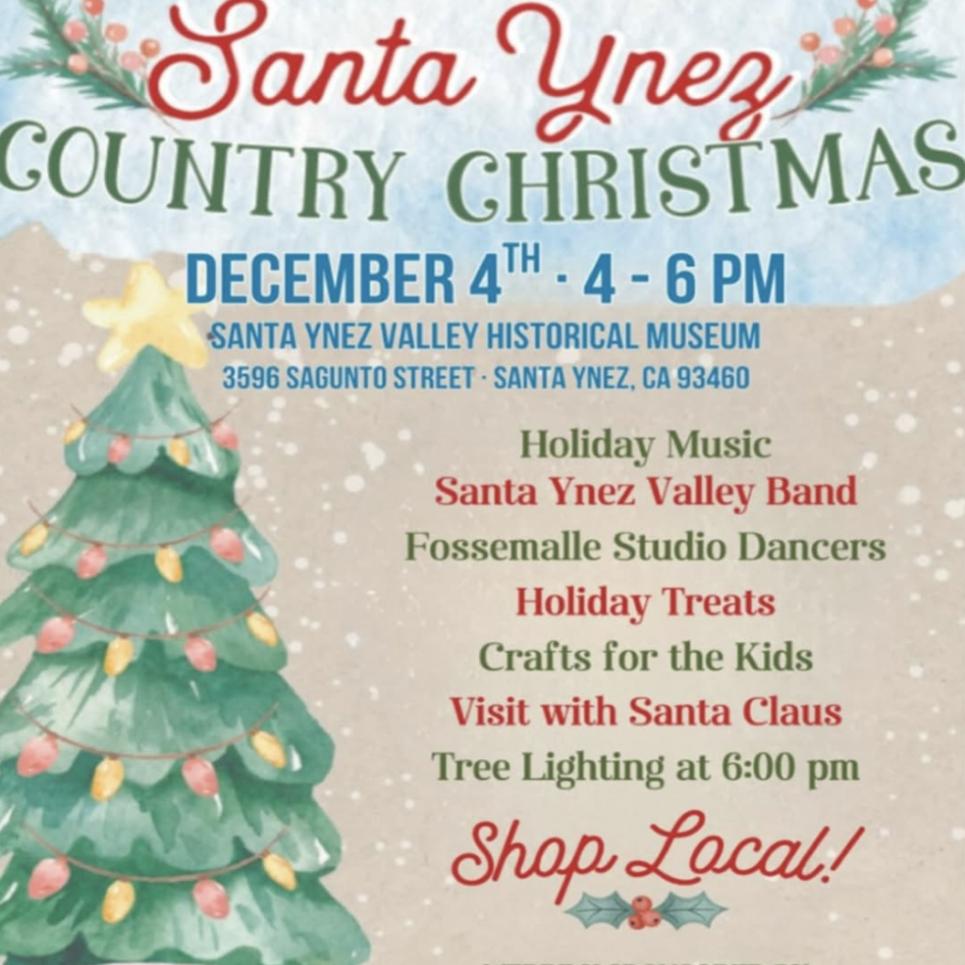
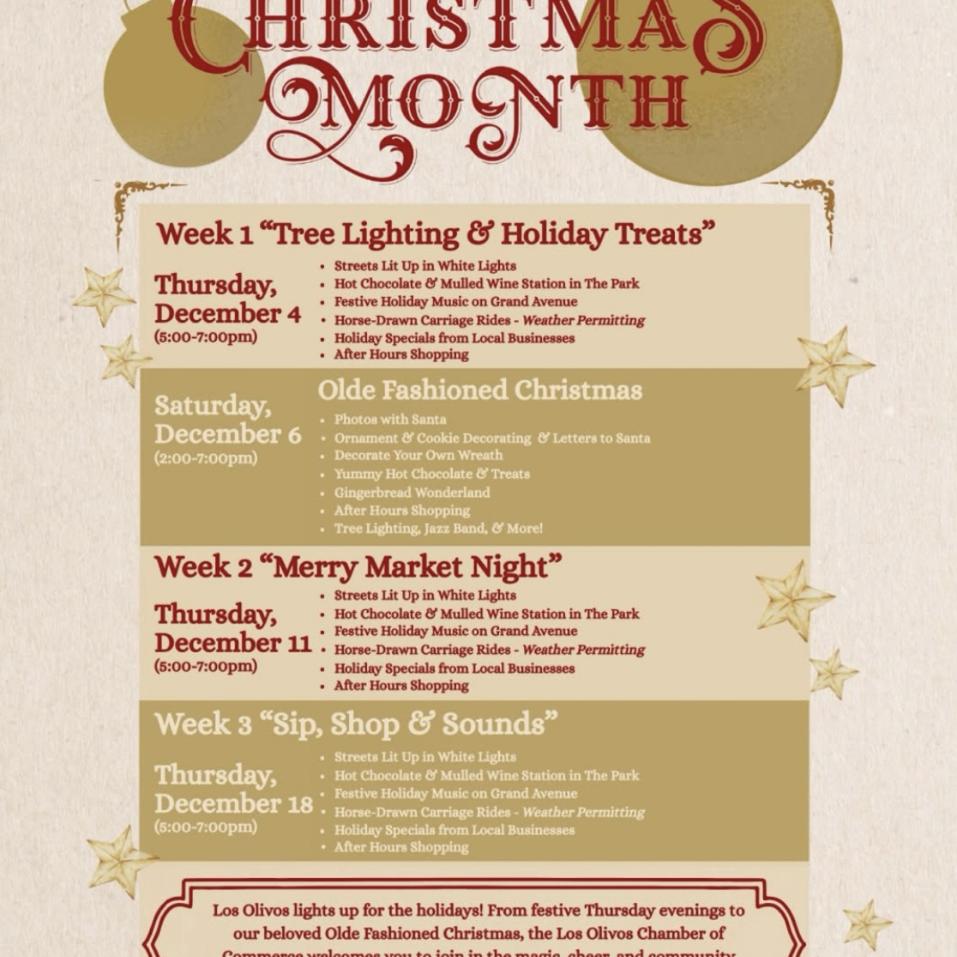
Friday, December 5
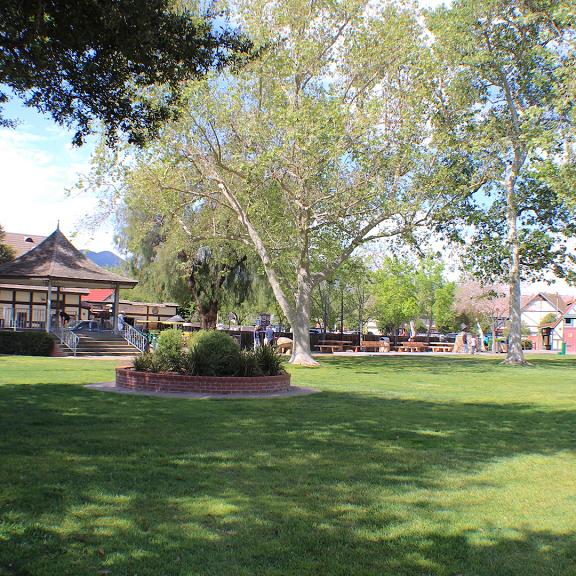
Saturday, December 6
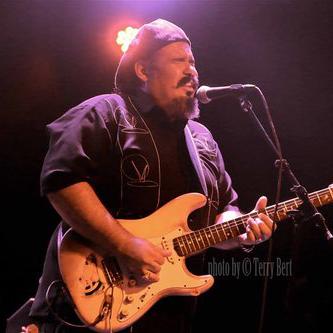
Sunday, December 7
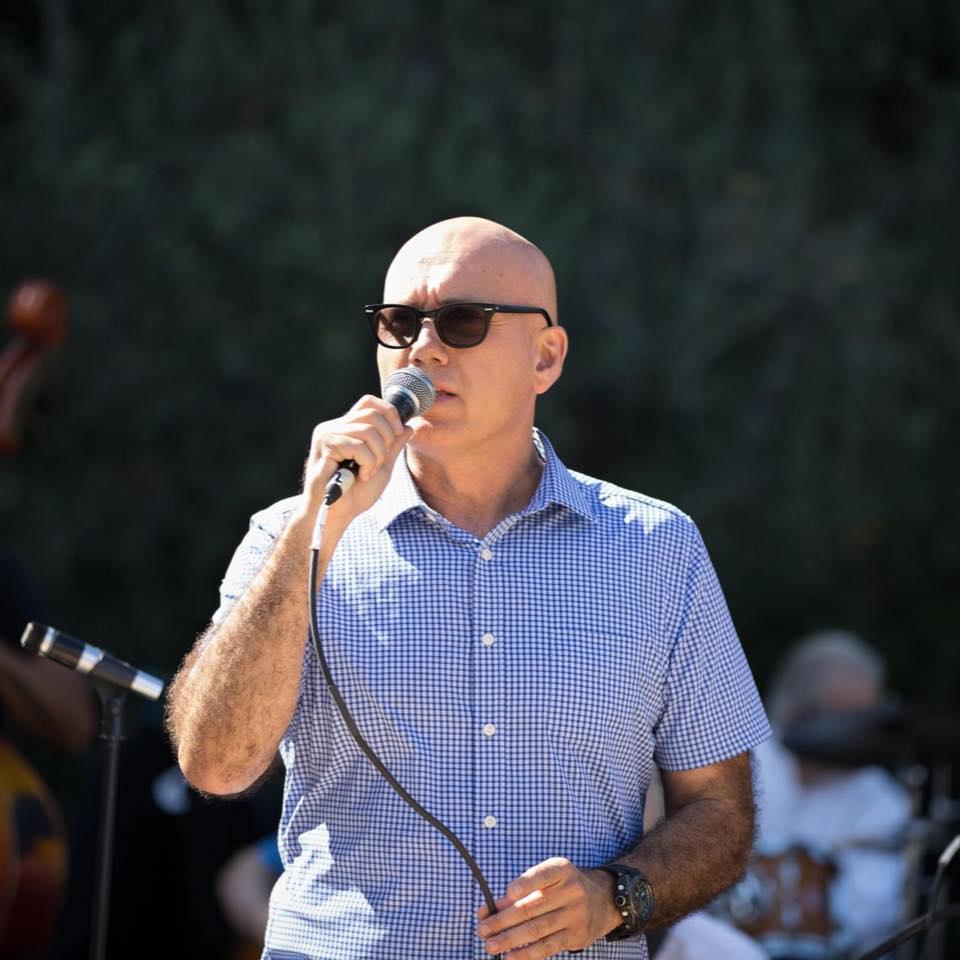
Thursday, December 11
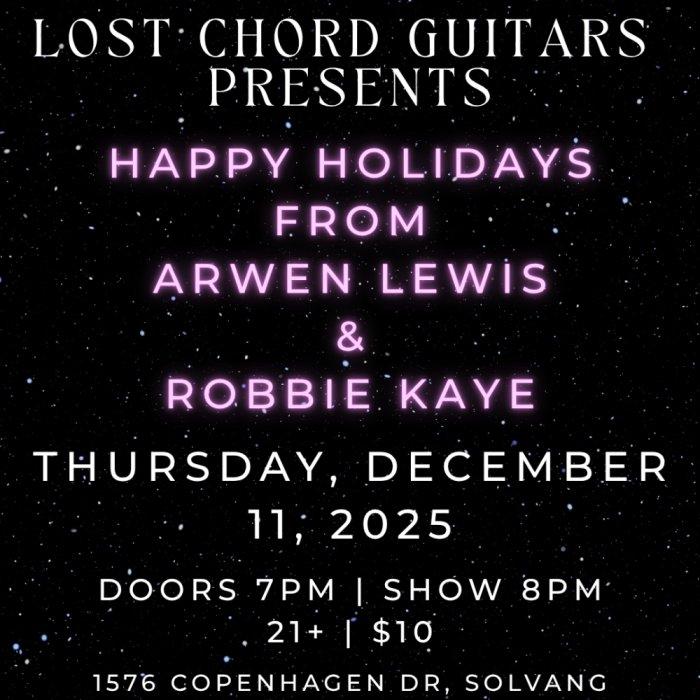
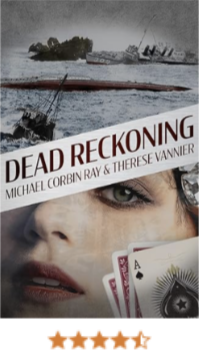 |
 |
Praise for Dead Reckoning
Local history comes alive.
“A captivating maritime story, both subtle and dramatic.”
—Kirkus Reviews
“A brisk and bracing read.”
—Glen Starkey, New Times San Luis Obispo
“Enjoy this book before it hits the silver screen. With a story so compelling and
cinematic, populated with irresistible characters, it’s destined to become a major motion picture.”
—Terry Rossio, screenwriter, Pirates of the Caribbean
We try to keep our events list as comprehensive and up-to-date as possible, but we encourage you to verify with the artist or venue websites for possible changes or cancellations. Thanks!
Story Archive
- The Show Must Go On
- A Foxen Canyon Classic
- Winery Focus: Koehler Winery
- Songs, Stories, and the Soul of a Small Town
- We Can’t Stop Thinking About Tony Evans Jr.
- Eat, Drink & Be Scary
- The Maybirds Take Flight
- Finding the Lost Chord
- How Randy Hansen Turns a Vineyard Into a “Safe Kind of High”
- Breaking Blues Boundaries: Richiman & Groove Nice’s Global Takeover
- Will Worden: The Troubador Bringing Country Music's Golden Age Back to Life
- From Burgundy to the Santa Rita Hills: Chasing the Perfect Pour
- From Tennessee Trails to Malibu Waves
- Benji Hughes and Jon Lindsay Live at Lost Chord
- The Winemakers are Taking Over the Tavern!
- Stolpman Vineyards’ So Fresh! Garage Takes Over Mattei’s Tavern
- Uncorking Something Rare
- The Sound of Legends
- Why California’s Wines — and Wine Spectator Magazine’s Top 100 — Deserve Your Attention
- The Hidden Impact of Wildfire
- A Lager Lover’s Dream Destination: Lagerville 2024
- Dream Big, Dream Pink!
- Beyond the Bottle
- Savoring Rainy Days: A Unique Wine Tasting Experience
- Musicians talk music with musician Arwen Lewis on the Arwen Lewis Show
- Feast and Festivity
- Ignite the Night
- Heard Through the Grapevine
- Monte Mills: Authentic Cowboy Icon of California's Central Coast
- Brander Vineyard, I have a crush on you
- Cheers to merlot!
- Sip into sunshine
- Carhartt's 2020 Rhone Blend
- Ten reasons why joining a wine club is a journey worth savoring
- What are you scaring up this Halloween?
- This week in the Santa Ynez Valley (September 26)
- This week in the Santa Ynez Valley (September 19)
- This week in the Santa Ynez Valley (September 13)
- This week in the Santa Ynez Valley (September 6)
- Reviving tradition: a journey to exceptional rosé winemaking
- This week in the Santa Ynez Valley (August 29)
- This week in the Santa Ynez Valley (August 22)
- This week in the Santa Ynez Valley (August 16)
- This week in the Santa Ynez Valley (August 11)
- Support the vineyard worker health and wellness fair
- Let's talk about the tip
- Unleash your senses at the Los Olivos Jazz and Olive Festival
- Tegan & Sara live in Solvang CANCELLED